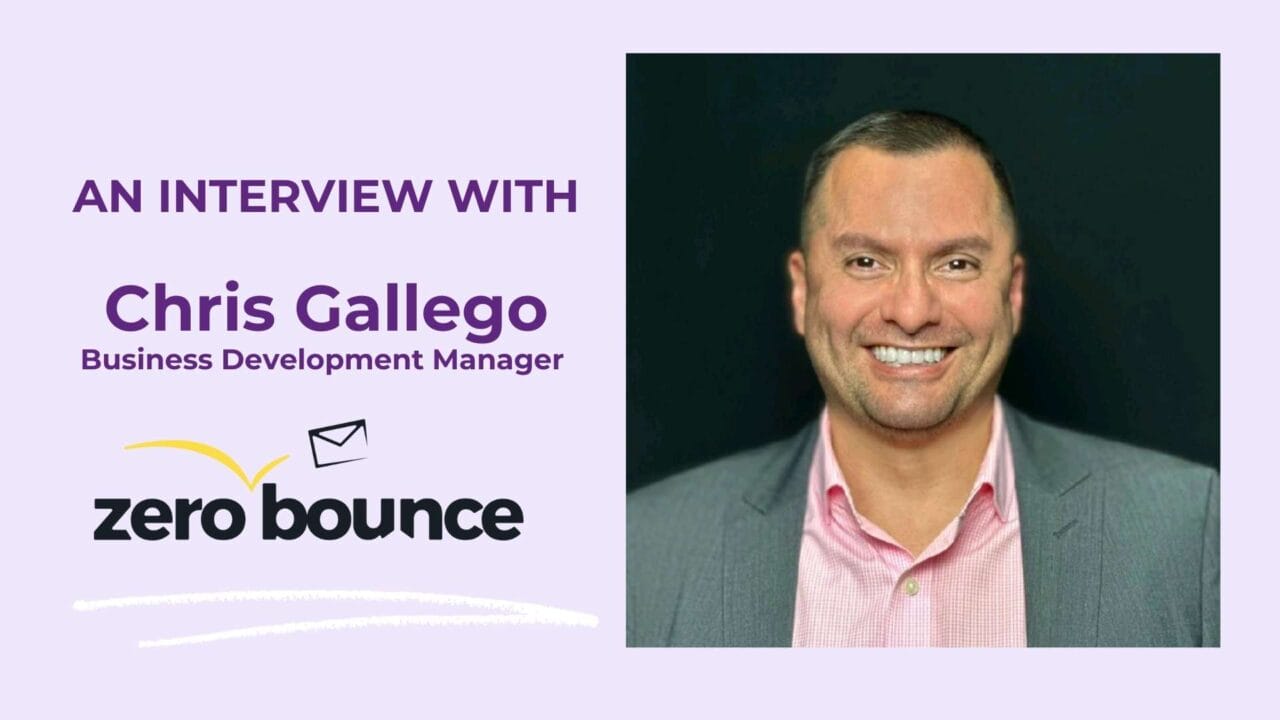
How to Use Customer Psychology to Get Better Email Marketing Results
How does customer psychology influence your email marketing results? As it turns out, every little detail can make a difference, and here to tell you about it is Martin Gessner, the founder of Focus on Force.
Email is one of the most effective sales and marketing channels. It might not feel like it, especially if you’ve spent a tremendous amount of time and effort drafting emails that never receive a response, but don’t give up. You, too, can craft winning emails.

To reap the benefits of email marketing, try to look to consumer psychology. Understanding patterns of human behavior and using those insights can dramatically boost email engagement and sales.
Customer psychology: what can you learn?
Here’s how to use customer psychology in your emails to get more engagement and boost your sales.
#1. Reciprocity: the genuine impulse of returning a favor
Have you ever received a thoughtful and expensive birthday present, but immediately felt bad because you’d only bought the person a $10 Amazon voucher? If so, you’ve already got some understanding of how reciprocal marketing works.
At its base level, reciprocity is the need to return a favor. If someone gets you a gift, you feel obligated to get one in return – ideally, something of equal or greater value.
To use reciprocity in your marketing, offer your customers a gift.
Reciprocity is a proven and effective marketing strategy. A 2002 study at Cornell University found that restaurant customers were more likely to tip the wait staff if they received mints. Those who had a personal interaction tipped even more.

Want to drum up more business for your pizza restaurant? Introduce a policy of offering a free pizza to anyone celebrating a birthday.
Perhaps you want to increase sales of your selection of business clothing? Try offering your customers vouchers for other local businesses if they get a suit fitting.
The possibilities are limited only by your creativity.
#2. Use scarcity – it still works
You’ve probably seen the abbreviation FOMO already. It means Fear of Missing Out.
FOMO works on the premise that people don’t want to let a good opportunity pass them by. Therefore, customers respond quickly if a product or service is only available in the short term or is likely to sell out.
We see examples of FOMO everywhere. For instance, music festivals will often emphasize how their previous events sold out, and audiences respond by staying up all night to purchase tickets as soon as they go on sale.
The speed all the tickets sell out then becomes a marketing point that can increase long-term demand even further. In the UK, for example, you see stories in the newspaper every year about tickets for Glastonbury festival selling out in less than a day.
Similarly, in fast-food marketing, restaurants will regularly offer limited-edition meals.

If the Tex Mex Burger is only available for one week, don’t you want to sample its unique flavor before it disappears from the menu forever?
Home shopping channels almost always feature an onscreen ticker counting down how many of their products remain in stock, while seasonal-themed items have become a standard feature of the major coffee chains.
Don’t believe us? Try buying a pumpkin spice latte in June.
Whatever they’re selling, the point is always the same: there aren’t many of these, so you’d better act now. You can use this to your advantage in an email marketing campaign. Make a featured product a limited edition, and the demand will increase.
#3. Price anchoring: what does it mean?
Estimating the value of something is harder than you’d think. Our knowledge of how much an item is worth is heavily influenced by the sales and marketing content we consume.
That’s why it can seem so unfair when you walk down the high street in your brand new, $150 designer jeans and see an identical pair for less than half that price in a charity shop’s window.
For this reason, when marketing a product, it’s helpful to mention its price and that of similar items. A $400 suit in isolation seems expensive, but it becomes a bargain when placed alongside a $700 suit. Pricing is perceived relatively, and items are viewed as cheap or expensive compared to similar items.
Price anchoring also works when offering discounts.
A common sales tactic for retailers is to show the original price alongside the reduced one. A famous example of this was when Steve Jobs introduced the Apple iPad and initially announced it would cost $999. He then dropped the price to $499, and the delighted audience applauded.
Whether the iPad truly was worth the original price was irrelevant. Apple’s customers saw a $500 saving.
Related: Apply these tips to your SMS marketing, as well – here are some of the best SMS marketing platforms.
#4. Make the most of social proof
Social proofing is when the actions of others influence our decisions. In the world of marketing, this is relevant because the customer will likely consider the behavior of others when deciding whether to make a purchase.
Put simply, we are more likely to trust a company or product if others have already done so. For instance, if you plan to take a holiday abroad, you’ll be more likely to book through the travel company with a thousand five-star reviews online than the one with none.
Even if the feedback is from people we don’t know, we’re hard-wired to believe that “a thousand people can’t be wrong.”
According to a widely cited set of stats, 92% of people read online reviews, and 80% trust them as much as personal recommendations. That sounds about right.
Consider this example from the Harry’s Razors website:

Each one of these products not only has a star rating below it, but you can also see at a glance how many times they’ve been rated. That is a deliberate and subtle method of instilling confidence in their brand.
An endorsement from an influencer or celebrity can be powerful, too. A respected actor or musician endorsing a product can dramatically increase sales. After all, they wouldn’t want to risk losing the trust of their fans by supporting inferior whiskey, would they?
Don’t be worried if you don’t have the funding to get Henry Cavill’s approval, though. There are several simple techniques you can still rely on.
If you want your customers to sign up for a newsletter, state how many people benefit from being on your email list. You can also add testimonials and user ratings to influence how subscribers view your products. Adding testimonials to your marketing strategy is a great way to show that your product is effective, but you should choose carefully which testimonials best represent your brand.
#5. Color psychology: does it really matter?
Lastly, there’s choosing the color, and it may be the most important factor of all. Studies have suggested that as much as 93% of purchasing decisions are based on aesthetic appearance alone. Therefore, you must get it right.
All the flowery prose in the world cannot compensate for a garish and off-putting color.
The best approach is to pick a small palette and stick to it. A wild mix of colors can be unattractive, but a two-tone scheme can be very pleasing to the eye.
Above all, make it relevant to what you’re selling. A limited edition, Christmas-themed hot chocolate drink will look far more appealing against a backdrop of gold, red and dark green than a vibrant landscape of neon pink and blue.
Create a successful campaign by using consumer psychology
As with all things in marketing, though, it is worth remembering that there is no one definitive approach. Creating an effective email marketing strategy is a key part of CRM optimization, but you must tailor it with your specific brand in mind.
The language and imagery must always be consistent with your catalogs and website. If the tone or color scheme of your emails are different, your customers will start looking elsewhere.
Understanding the psychology of your customers can make the difference between whether your email is opened and acted upon or whether it just clutters up an inbox until the recipient decides to click the ‘unsubscribe’ button.
Email can be a hugely beneficial promotional tool when you use it correctly. For all the whispers of it being obsolete in the age of social media, there’s life in it yet, and it would be foolish to ignore it.
Author: Martin Gessner is the Founder of Focus on Force. He has spent over 10 years working in various Salesforce roles including business analyst, project manager, consultant and solutions architect. Along the way he has earned twelve certifications, published “The Salesforce Career Playbook” and helps Salesforce professionals learn more about Salesforce, develop their career and prepare for certifications.






